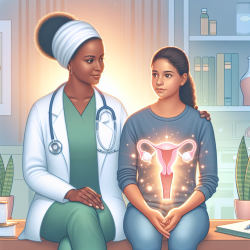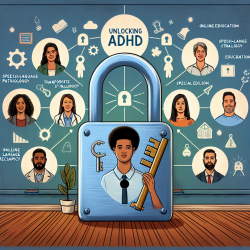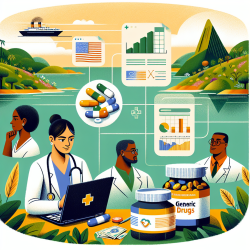Introduction
Adolescent girls face unique challenges when it comes to abortion knowledge, attitudes, and experiences. The research article "Abortion knowledge, attitudes and experiences among adolescent girls: a review of the literature" by C. Espinoza et al. provides valuable insights into these challenges. This blog aims to help practitioners improve their skills by implementing the outcomes of this research or by encouraging further exploration into this critical area.
Key Findings from the Research
The research highlights several critical findings about adolescent girls' experiences with abortion:
- Adolescent girls often lack specific knowledge about safe abortion services, which leads to delays in seeking care due to fear of stigma and provider bias.
- Girls aged 10-14 are particularly vulnerable, often experiencing pregnancies due to sexual abuse or transactional sex, and face more barriers to care than older adolescents.
- While physical complications from abortion are not higher among adolescents compared to older cohorts, they are at significant risk of psychosocial harm.
- Adolescents need early education about safe abortion and a responsive, stigma-free healthcare system.
Implications for Practitioners
Practitioners can enhance their skills and improve outcomes for adolescent girls by considering the following strategies:
- Education and Awareness: Implement comprehensive sexual education programs that include information about safe abortion practices and legal rights. This can empower adolescents with the knowledge they need to make informed decisions.
- Stigma-Free Environments: Create a supportive and non-judgmental environment for adolescents seeking reproductive health services. Training staff to be sensitive to the unique needs of adolescents can help reduce stigma and encourage care-seeking behavior.
- Early Intervention: Develop programs that target younger adolescents (ages 10-14) to provide early intervention and support. This can help address the compounded challenges they face due to their age and circumstances.
- Collaboration with Parents and Guardians: Engage parents and guardians in educational initiatives to foster open communication and support for adolescents. This can help reduce barriers to care and improve outcomes.
- Trauma-Informed Care: Recognize the potential for sexual violence in adolescent pregnancies and provide trauma-informed care and counseling. Ensure that care providers are trained to handle these situations sensitively and effectively.
Encouraging Further Research
While the research provides valuable insights, there is a need for further exploration into the specific needs of adolescents, particularly those aged 10-14. Practitioners are encouraged to engage in or support research initiatives that focus on:
- Developing targeted interventions for younger adolescents.
- Exploring the psychosocial impacts of abortion on adolescents and effective coping strategies.
- Identifying and addressing barriers to accessing safe abortion services.
Conclusion
Practitioners play a crucial role in supporting adolescent girls through their reproductive health journeys. By implementing the outcomes of the research and encouraging further exploration, practitioners can contribute to a more informed, supportive, and stigma-free environment for adolescents seeking abortion care.
To read the original research paper, please follow this link: Abortion knowledge, attitudes and experiences among adolescent girls: a review of the literature.










